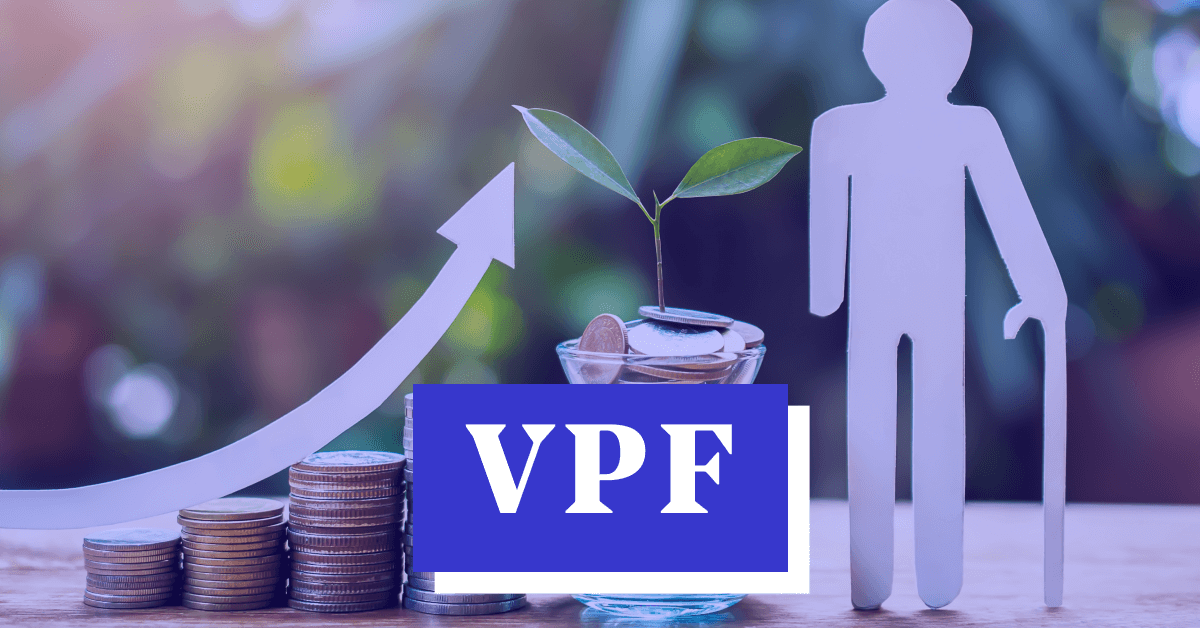
A Voluntary Provident Fund (VPF) is an extension of the Employees’ Provident Fund (EPF) in India, allowing employees to make additional contributions beyond the mandatory EPF contribution. It is a popular investment option due to its high-interest rates, tax benefits, and secure nature.
Key Features of VPF
1) Voluntary Contributions
- Employees can choose to contribute any amount of their basic salary and dearness allowance to the VPF. There is no upper limit on the contribution.
- Contributions are made directly from the salary, similar to the EPF deductions.
2) Interest Rate
- The interest rate on VPF is the same as that on EPF, which is determined by the government each year. Historically, the rate has been higher than many other fixed-income investment options.
3) Tax Benefits
- Employee contributions to VPF qualify for tax deductions under Section 80C of the Income Tax Act, up to a maximum of ₹1.5 lakh per financial year.
- The interest earned and the maturity amount are also tax-free, provided the withdrawal is made after completing five continuous years of service.
4) Withdrawal Rules
- VPF has similar withdrawal rules as EPF. Partial withdrawals are allowed for specific purposes such as medical emergencies, higher education, marriage, and purchase or construction of a house.
- Full withdrawal of VPF balance is allowed upon retirement, resignation, or termination of service, provided certain conditions are met.
5) Lock-in Period
- While there is no fixed lock-in period, tax benefits on the interest earned are applicable only if the amount is withdrawn after completing five years of continuous service.
6) Risk and Security
- VPF is considered a low-risk investment since it is backed by the government. The capital is secure, and the returns are guaranteed.
7) Employer’s Role
- Unlike EPF, there is no mandatory contribution from the employer to the VPF. The entire contribution is made by the employee.
Benefits of VPF
1) High Returns
- The interest rate offered by VPF is typically higher than most fixed-income investments like fixed deposits and recurring deposits.
2) Tax Efficiency
- Contributions, interest earned, and the maturity amount are all eligible for tax benefits, making VPF a highly tax-efficient savings option.
3) Retirement Savings
- VPF is an excellent tool for building a substantial corpus for retirement, offering financial security in the post-employment years.
4) Easy to Manage
- Since VPF contributions are deducted directly from the salary, it is a hassle-free way to save regularly without the need for separate investment accounts.
5) Flexibility
- Employees can start, stop, or modify their VPF contributions at any time, offering flexibility in managing their savings according to financial circumstances.
How to Enroll in VPF
1) Application
- Employees need to inform their payroll or HR department about their decision to contribute to VPF and specify the amount to be deducted from their salary.
2) Documentation
- No additional documentation is typically required if the employee is already an EPF member. The existing EPF account is used for VPF contributions.
3) Contribution Commencement
- Once the application is processed, the contributions will start getting deducted from the salary and credited to the EPF account.
The Voluntary Provident Fund is an advantageous savings scheme for employees looking to enhance their retirement corpus with additional contributions beyond the mandatory EPF. With its attractive interest rates, tax benefits, and secure nature, VPF serves as a robust financial tool for long-term savings and financial planning.

Leave A Comment
You must be logged in to post a comment.